Rigid Bodies Translational Motion and Rotational Motion
A rigid body shows two distinct types of motion that is translational and rotational motion. According to translational meaning , the movement which is uniform without any rotation. Translational motion in physics or what is translational motion can be defined in simple terms , such that when an extended rigid body traces a straight path it is in pure translational motion. In this article you will learn about rigid body, translation motion , rotational motion, difference between translatinal and rotational motion and application of translational and rotational motion. This topic is very important for school exams as well as for competitive exam like Jee Mains and NEET .
This Story also Contains
- Rigid body
- What is Translational motion
- Rotational motion :
- Difference Between Translational Motion and Rotational Motion :
- Applications of Translational and Rotational Motion:

Also read -
Rigid body
When a body has negligible or zero deformation , then it is known as rigid body. A rigid body is usually considered as a continuous distribution of mass . A perfect rigid body is when all the bodies are made up of atoms and molecules which are in a state of uniform motion . All the microscopic displacements are negligible and small , in this case the given body called rigid. In bengali rigid means দৃঢ়.
There are two types of rigid body motion
-
Translational motion
-
Rotational motion
What is Translational motion
Definition of translational motion :
When a body is moving in a straight line or a linear path , it is known as translational motion. In other words, translational motion is 1- dimensional motion .
Some translatory motion examples - motion of a box along a straight line, freely falling body .
Explanation of examples of translatory motion :
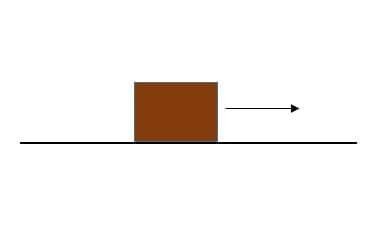
Translational motion of the box on a straight line
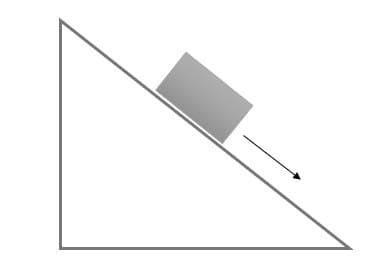
Translational motion of the box in an incline plane
-
If a box is pushed in forward direction in straight path then its having a translational motion. When the box is pushed forward the whole body moves along with that each constituent particle of the that box also moves in forward direction. If we consider two particles as two points , then we can say the distance between two points is constant in this translational motion . Each particle will experience same effects as the box experiences.
-
In a freely falling body ,when a body falls freely in downward direction . The distance between two constituent particle in the body is fixed. The motion of each particle in that body is similar to the translational motion of the whole body .
For translational motion , the coordinates of the body always stays in parallel to the space coordinate system , through the motion of a rigid body , the motion is called pure translational in nature. Due to translatory force a body move in a straight line with uniform motion. When the body moves from one point to the other in a straight path , this kind of movement is known as translational movement. The characteristic of a pure translational motion is that , during any time of interval ,every constituent particle of a rigid body undergoes the same amount of displacement. In translational motion rigid body behaves as a single particle . If , the motion of a particle in a rigid body can be described then the motion of the whole body can be described. If a body is fixed at one point it cannot have any translational motion. Translational motion meaning in hindi रैखिक गति .
NCERT Physics Notes:
Types of translational motion :
-
Rectilinear motion
-
Curvilinear motion
Rectilinear Motion
Rectilinear motion is the motion of an object along a straight line. In this type of motion, the direction of movement does not change, and the object moves either forward or backward along one path.
For example, a car moving on a straight road, a lift going up or down, or a ball rolling in a straight line are all examples of rectilinear motion.
Rectilinear motion can be of two types:
- Uniform rectilinear motion – when an object moves in a straight line with a constant speed.
- Non-uniform rectilinear motion – when the speed of the object changes while moving in a straight line.
Curvilinear Motion
Curvilinear motion is the motion of an object along a curved path. In this type of motion, the direction of movement keeps changing at every point, even if the speed remains constant.
For example, the motion of a car turning on a curved road, a ball thrown in the air following a curved path, or the motion of a planet around the Sun are all examples of curvilinear motion.
Rotational motion :
When a body moves in a circular path about an axis , the motion is called rotational motion. The axis is called axis of rotation .
Example of rotational motion –motion of a wheel , motion of a ball.
Explanation of rotational motion :
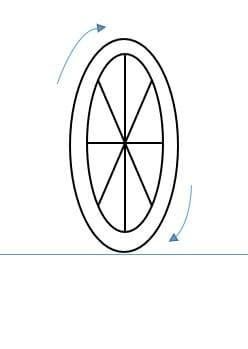
Rotational motion of a wheel around its axis passing through centre
Also read :
- NCERT notes Class 11 Physics Chapter 7 System of Particles and Rotational motion
- NCERT solutions for Class 11 Physics Chapter 7 System of Particles and Rotational motion
- NCERT Exemplar Class 11 Physics Solutions Chapter 7 System of Particles and Rotational motion
When a wheel rotates around the axis passing normally through its centre then the motion is rotational motion .The whole body as well as the constituent particles of the wheel rotates along the axis .The wheel traces a circular path on its axis so it is a rotational motion.
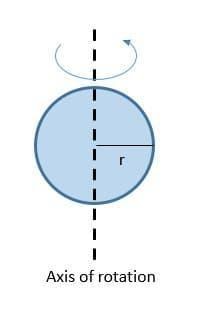
-
The motion of a ball when it spins around its axis that passes normally through the centre of the ball then the ball and its constituent particles show rotational motion.
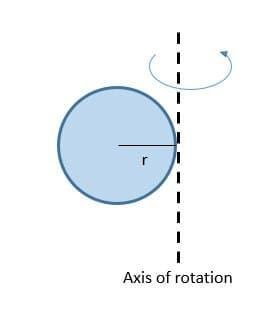
-
In the same ball when the axis is shifted to the circumference then the whole ball will rotate around the axis . In this case also the ball traces a circular path. This is also rotational motion.
In pure rotational motion every constituent particles shows rotational motion along with the whole body .The rotation of a rigid body about a fixed axis , is known as axis of rotation .The pure rotation is that during any time interval ,every constituent particle of the rigid body experiences the same angular displacement. The whole rigid body behaves as a particle in case of pure rotation.
Difference Between Translational Motion and Rotational Motion :
| Translational Motion | Rotational Motion |
| The whole object moves in a straight line or along a path from one place to another. | The object spins or rotates about a fixed axis. |
| Every point of the object moves the same distance in the same time. | Different points of the object move through different distances in the same time. |
| Example: A car moving on a straight road. | Example: A spinning fan or a rotating wheel. |
| It is measured in terms of displacement, velocity, and acceleration. | It is measured in terms of angular displacement, angular velocity, and angular acceleration. |
| The motion is linear. | The motion is angular. |
Applications of Translational and Rotational Motion:
Translational Motion
1. A car moving on a straight road.
2. A train moving along the tracks.
3. A ball rolling in a straight line (its center shows translational motion).
4. Movement of an elevator up and down.
Rotational Motion
1. The rotation of a ceiling fan.
2. The spinning of the Earth on its axis.
3. The rotation of a wheel or turbine.
4. The blades of a mixer or washing machine drum.
Also check-
Frequently Asked Questions (FAQs)
A system of particles in which the distance between any two particles is constant ,this type of system or body is called rigid body.
At any time interval when a rigid body and its constituent particles moves in uniformly in the same direction ,then the motion is called translational motion.
When a body undergoes translational and rotational motion simultaneously , then its motion is called mixed motion.
Example – A wheel rotates on its axis at its centre, that is rotational motion . While moving on its axis when it moves (translates) along the road then it shows mixed motion.
Two equal , parallel and opposite forces,having different lines of action , acting simultaneously on a body ,this type of force is called coupled force.
Moment of inertia of a body about an axis of rotation can be defined as the torque acting on the body divided by the respective angular acceleration which is generated about the same axis of rotation
Translational motion occurs when all the particles of a rigid body move the same distance in the same direction. Example – a car moving straight on a road.
Rotational motion occurs when a rigid body spins about a fixed axis, and every point in the body moves in a circular path. Example – a spinning wheel or fan.
A rigid body is one whose shape and size do not change even when forces are applied.
A rotating body is a rigid body that spins around a fixed axis.
Translational equilibrium happens when the net force on a body is zero, so it does not move in a straight line.
Rotational equilibrium happens when the net torque on a body is zero, so it does not rotate or change its angular motion.